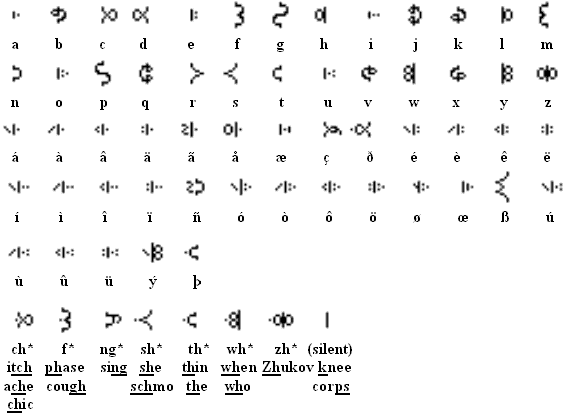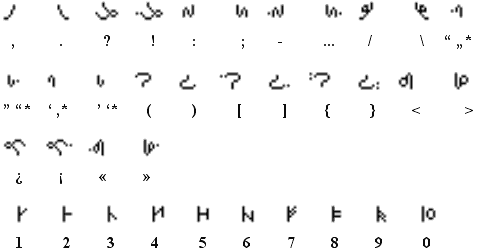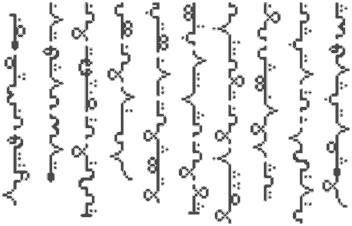
Fenglish
Fenglish is the creation of Hanbing Feng
(hanbingfeng828@hotmail.com),
a high school student in New York City. One of Hanbing’s hobbies
is to invent secret ways to communicate and after many visits to
this site, he was inspired to create Fenglish, which he modelled to
some extent on the Manchu alphabet.
Notable Features
- Can be used to write English, Spanish, French, German, Italian,
Portuguese, Swedish, Danish, Icelandic and a number of other
languages normally written with the Latin alphabet. - Written in vertical columns running from top to bottom and
from left to right. - All letters within each word are connected, except the vowels,
some punctuation marks and accent marks. This makes it possible
to write words with a single, continuous pen stroke. - A space is left at the top of the first column of a paragraph.
- This symbol:

indicates capital letters. - This symbol:

indicates that a word continues on the next column. - This symbol:

is a repetition mark – used to replace a repeated letter
Fenglish

Fenglish punctuation and numerals

Notes
- ch f ng sh th wh and zh are only used in words which have
the exact spelling in them, e.g. “sh” can’t be used in the word
“chic”, even when they sound the same, except words like Deutsch
(“ch” is used), schedule(“sh” is used, Br. not Am). - The quotation marks before * are used in German, Icelandic etc.
Sample text

‘Translation’
All human beings are born free and equal in dignity and rights. They
are endowed with reason and conscience and should act towards one another
in a spirit of brotherhood.
(Article 1 of the Universal Declaration of Human Rights)
